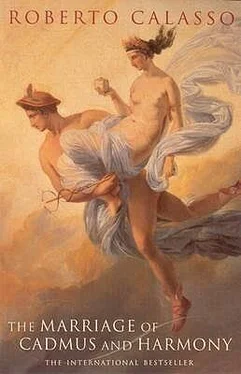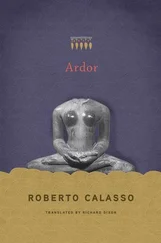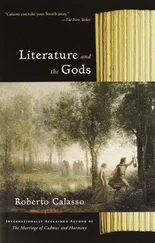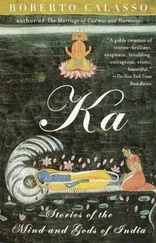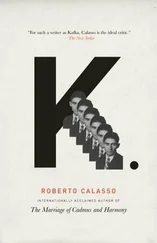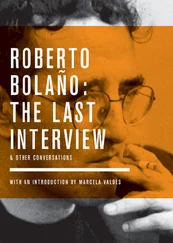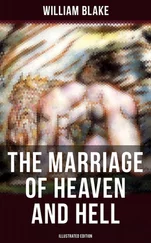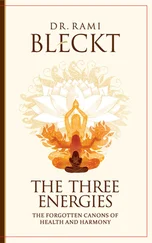Roberto Calasso - The Marriage of Cadmus and Harmony
Здесь есть возможность читать онлайн «Roberto Calasso - The Marriage of Cadmus and Harmony» весь текст электронной книги совершенно бесплатно (целиком полную версию без сокращений). В некоторых случаях можно слушать аудио, скачать через торрент в формате fb2 и присутствует краткое содержание. Год выпуска: 1993, Издательство: Alfred A. Knopf Inc, Жанр: Современная проза, на английском языке. Описание произведения, (предисловие) а так же отзывы посетителей доступны на портале библиотеки ЛибКат.
- Название:The Marriage of Cadmus and Harmony
- Автор:
- Издательство:Alfred A. Knopf Inc
- Жанр:
- Год:1993
- ISBN:нет данных
- Рейтинг книги:3 / 5. Голосов: 1
-
Избранное:Добавить в избранное
- Отзывы:
-
Ваша оценка:
- 60
- 1
- 2
- 3
- 4
- 5
The Marriage of Cadmus and Harmony: краткое содержание, описание и аннотация
Предлагаем к чтению аннотацию, описание, краткое содержание или предисловие (зависит от того, что написал сам автор книги «The Marriage of Cadmus and Harmony»). Если вы не нашли необходимую информацию о книге — напишите в комментариях, мы постараемся отыскать её.
The Marriage of Cadmus and Harmony — читать онлайн бесплатно полную книгу (весь текст) целиком
Ниже представлен текст книги, разбитый по страницам. Система сохранения места последней прочитанной страницы, позволяет с удобством читать онлайн бесплатно книгу «The Marriage of Cadmus and Harmony», без необходимости каждый раз заново искать на чём Вы остановились. Поставьте закладку, и сможете в любой момент перейти на страницу, на которой закончили чтение.
Интервал:
Закладка:
On entering Apollo’s temple in Delphi, bewildered by the throng of metallic objects leaning from the walls and sparkling in the shadows, you could sometimes make out, in the background, the bust of a woman (and for many years it would have been a young woman) who seemed to grow right out of the floor: she wore the simple tunic local girls wore; she was the Pythia. Squatting on her tripod, as though on a stool in a bar, she watched the new arrivals as they came into the mégaron . The Pythia’s chamber, the ádyton , was smaller than the main hall of the temple, and a little over a yard lower. Beside it was a small booth with a bench where those who came to consult the oracle would sit, unable to see the Pythia as she prophesied among her sacred objects: the tall tripod anchored to the floor above a crevice in the ground, the umbilical stone wrapped in the cords of a double net, the base of the tomb of Dionysus, a golden statue of Apollo, a laurel tree that got a little light from above, a trickle of water that ran behind her.
There is an object that represents one of the highest peaks of civilization, with respect to which all others we are familiar with are but watered down derivatives: the bronze caldron. In the China of the Shang dynasty it became the cult object around which people’s lives revolved. Even today we can only reconstruct that world through those bronze caldrons. It was then that the sacred vessel was given a certain number of canonical forms (how many is still a matter of debate), which were to survive for more than two thousand years, the materials changing, the caldrons themselves becoming ever more fragile and secular. In Doric Greece, the caldron was made in just the one dominant form: the tripod. During the geometric age, the formal thrust of the Greek mind seemed to concentrate on these objects. They become the sacred objects par excellence. That which has an indispensable, humble function — to cook food — is imperiously subtracted from any function other than that of making offerings to the gods. Iaròn Diós , “sacred to Zeus,” we read on the rim of a three-legged basin in the Olympia Museum. And in both China and Greece we find bronze caldrons being decorated with animal figures: in China the most common is the tao-t’ieh , a monster made up of other animals and ideograms, from the owl to the cicada, the leopard to the snake; in Greece it is usually the griffin, its powerful beak open and tongue darting out, but there are also bronze caldrons decorated with lions and bulls.
The choice of those canonical forms, established as early as the Shang dynasty, was to put a stamp on the whole of Chinese civilization, right down to the present day. The time would come when the bronzes with their green patina would be lost, buried in the loess or in museum collections. But Chinese design would be a genetic continuation of the canon of these bronzes. Decorative devices and features of architectural style would always hark back, some more directly, some less, to that beginning. In Greece too the tripod design has the splendor of an important beginning, but then it disappears forever, replaced by another form: the human figure. From that moment on, in both Delphi and Olympia, we find fewer and fewer bronze tripods being dedicated to the gods, and more and more statues. Often they were statues of gods, but sometimes they represented the winners of some war or race who wanted to dedicate themselves. It was the opposite of what happens today: instead of the winner receiving a laughable little statuette as a prize, his prize was the permission to raise a statue of himself, sometimes a huge statue, and dedicate it to a god. Human figures appeared on tall columns, figures with names and dedications. And yet these figures, at the opposite extreme from the complete anonymity of the tripod, for a while inherited its sacred quality. What disappeared entirely was the food or drink that had bubbled in the caldron for the god. That energy migrated into the drapes of a marble tunic, into a horse’s harness, the wings of a Sphinx. The offering was no longer something that could be eaten: now, for the first time, you could only look.
The first human beings the Olympians saw from their ether were the mountain Nymphs. These extremely long-lived though ultimately mortal women would appear and disappear among woods and undergrowth, often in pursuit of wild beasts. It was they who kindled the first fires of desire in the Olympians, served as their initiation almost into the creatures of the earth. Apollo was not always happy in his loves, male or female. At a certain point, something would go wrong — a fatal frenzy, as happened with Hyacinthus, and with Coronis. But at least with Cyrene it would seem that all went well.
He watched Cyrene for a long time, from on high, while she hunted on Mount Pelion. He was impressed and pleased by her scorn for things domestic. The loom was not for her. She went out day and night to chase the wildest of beasts. This reminded Apollo of his sister, Artemis. And what reminded him even more strongly of his sister was that Cyrene “liked being a virgin and keeping an unstained bed.” Playing innocent, Apollo called on Chiron, Cyrene’s father, and asked him who this girl fighting the lion might be. Chiron smiled at the god’s ingenuousness in pretending he didn’t know. In the meantime, Cyrene had beaten the lion yet again. To have her surrender her virginity without regrets, Apollo chose one of his most secret forms: the wolf. It was the form that would give most pleasure both to her and to himself. Afterward there were the usual nuptial honors: Apollo took Cyrene to Libya in a golden chariot, and Aphrodite led them to a golden palace deep in a luxuriant garden. But as far as sex was concerned, they were never to improve on that first time. Apollo gave Cyrene this part of Africa for her to hunt her wild beasts in, and he brought along other Nymphs to serve her. Then their child, Aristaeus, was born. Like another child of Apollo, Asclepius, he possessed the gift of healing. The Muses brought him up on prophesy and honey.
The power of the abstract begins as a rejection of that epic encyclopedism where every element, whether it be a comment on the power of the gods or instructions on how to fix the axles to a cart, has the same importance, the same impact on the mosaic surface of the narrative. Anaximander and Heraclitus aimed for the opposite: sentences that subsumed whole cycles of reality and almost eclipsed them, dazzling the reader with their own light. The lógos , when it appears, annihilates the particular, the accumulation of detritus typical of every experience, that obligation to repeat every detail. Like the cipher, like the arrow of Abaris, the lógos transfixes in the merest atom of time what the rhapsodies had strung together and repeated over and over for night after smoky night.
The resulting thrill was without precedent. People had heard stories from the East, stories more occult than their own. But it was no longer a question of stories. In comparison with what had gone before, these were bare propositions that stamped things with “the seal of ‘that which is.’ ” And the seal would live on, closed away inside itself, proud, immobile, like the epsilon engraved on the temple at Delphi. There, for the first time, the priests realized that the knowledge that is power derives not only from the secret stories of the gods but from the hypothetical syllogism.
Every day, at dawn, Ion would begin to sweep the area in front of Apollo’s temple in Delphi. He picked up the leftovers from the sacrifices, watched the hawks circling down from Parnassus, and threatened them with his bow before they could peck at the golden rooftops. Carefully, he laid out fresh olive garlands and poured buckets of cold water on the temple floor. It was a chore he liked, a humble, solemn duty. Everything had to look clean and whole for when the crowd of visitors and those who came to consult the oracle would swarm up the twisting path to the sanctuary. This temple of prophecy perched high up on the rocks was all Ion had ever seen of the world. And he imagined he would always live here, as though in an eternal orphanage. In the end he was only alive at all because one day, at this same time, in the early morning, the Pythia had found a basket in the temple gardens and, with strange benevolence, picked it up. With similarly strange benevolence, the god let the little boy grow up, playing among the altars. Then they made him guardian of Apollo’s treasures. He knew nothing of his father or mother, he was less than a slave, a nobody, and nobody’s child; yet he thought of Apollo as his father and of the Pythia as his mother. He owed his life, he felt, to them alone. Nothing else mattered, or even existed for him really. Young, pure, devout, cheerful, Ion welcomed the visitors, showed them the various rooms, the various ceremonies. But the best time of the day was this silent hour at dawn, when he swept and cleaned and all the while looked about him.
Читать дальшеИнтервал:
Закладка:
Похожие книги на «The Marriage of Cadmus and Harmony»
Представляем Вашему вниманию похожие книги на «The Marriage of Cadmus and Harmony» списком для выбора. Мы отобрали схожую по названию и смыслу литературу в надежде предоставить читателям больше вариантов отыскать новые, интересные, ещё непрочитанные произведения.
Обсуждение, отзывы о книге «The Marriage of Cadmus and Harmony» и просто собственные мнения читателей. Оставьте ваши комментарии, напишите, что Вы думаете о произведении, его смысле или главных героях. Укажите что конкретно понравилось, а что нет, и почему Вы так считаете.
